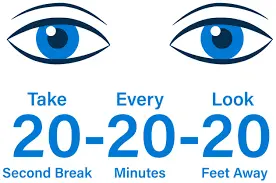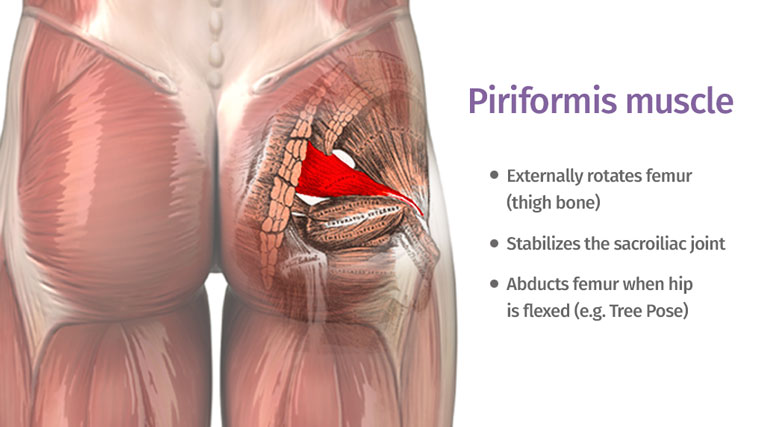Vitamin B Complex
Introduction
The eight water-soluble vitamins make up the B vitamin group. They must be changed every day because the body does not store them.
Leafy green vegetables, dairy products, legumes, and animal proteins are good sources of B vitamins.
In general, they can be classified into two types of metabolism: anabolic metabolism, which produces bioactive molecules, and catabolic metabolism, which produces energy. They are essential cofactors for several cellular metabolic pathways, neurotransmitter production, and axonal transport.
A large number of vital enzymes involved in the production of RNA and DNA depend on B vitamins as cofactors. Deficits in B vitamins have been implicated as causative agents in the emergence of a wide range of pathological conditions and neurologic diseases.
It may be necessary to pay attention to the dietary B vitamin levels of some populations, such as the elderly, if they experience decreases in food intake and absorption efficiency. Even at intake levels achieved with fortified foods or supplements, the majority of B vitamins are generally safe.
Keywords: vitamins, anemia, depression, alcoholism, nutrition, and neurologic disorders
| Vitamin | Men | Nonpregnant women | Pregnant women |
| B1 | 1.2 mg | 1.1 mg | 1.4 mg |
| B2 | 1.3 mg | 1.1 mg | 1.4 mg |
| B3 | 16 mg | 14 mg | 18 mg |
| B5 | 5 mg | 5 mg | 6 mg |
| B6 | 1-1.7 mg | 1-1.7 mg | 1.9 mg |
| B7 | 30 mcg | 30 mcg | 30 mcg |
| B9 | 400 mcg | 400 mcg | 600 mcg |
| B12 | 2.4 mcg | 2.4 mcg | 2.4 mcg |
| Vitamin | Bioactive coenzyme | Deficiency symptoms | Neurologic symptoms of deficiency | Risk factor(s) for deficiency |
| Thiamine (B1) | TPP | Mild: fatigue, anorexia, and impaired reaction to stress Deficiency: Beriberi, endocarditis, arrhythmia, and sudden death | Mild: irritability, sleep disturbance, peripheral neuropathy, and confusion Deficiency: Wernicke-Korsakoff syndrome | –Poor intake: chronic alcoholism, carbohydrate loading, IV/PO without adequate thiamine intake, and malnutrition (eg, HIV, chemotherapy) –Impaired absorption: gastrointestinal surgical procedures, including bariatric surgical procedures –Increased utilization: pregnancy, lactation, hyperthyroidism, and refeeding syndrome –Increased loss: diarrhea, diuretics, advanced kidney disease, or dialysis |
| Riboflavin (B2) | Flavoproteins: flavin adenine dinucleotide or flavin mononucleotide (redox reactions) | Stomatitis, cheilitis, glossitis, dermatitis, eye irritation, cataracts, and anemia | Fatigue, migraine, and personality changes | –Anorexia nervosa –Malabsorptive syndromes –Prolonged use of barbiturates –Uncommon inborn errors of metabolism –Pregnancy – Dialysis or diarrhea |
| Niacin (B3) | Nicotinamide adenine dinucleotide and nicotinamide adenine dinucleotide phosphate | Pellagra: dermatitis, photodermatitis, burning and twitching in extremities, and diarrhea | Depression, anxiety, memory loss, and psychotic symptoms | –Low tryptophan intake –High corn diet –Carcinoid syndrome –Prolonged use of isoniazid –Hartnup disease |
| Pantothenic acid (B5) | Coenzyme A | Diarrhea, numbness, burning sensations, and dermatitis | Encephalopathy, demyelination, insomnia, and behavioral changes | –Deficiency is rare unless associated with another vitamin B deficiency |
| Pyridoxine, pyridoxal, pyridoxamine (B6) | Pyridoxal 5′-phosphate | Anemia | Cognitive impairment, irritability, depression, peripheral neuropathy, and convulsion | – Alcoholism, renal insufficiency, rheumatoid arthritis, and malabsorption syndromes |
| Biotin (B7) | Biotin | Dermatitis and tingling in extremities | Depression, lethargy, and seizures | –Biotinidase deficiency, alcoholism, epileptic medications, pregnancy, or breastfeeding |
| Folic acid, folate (B9) | Methyltetrahydrofolate | Megaloblastic anemia, peripheral neuropathy, and spinal cord lesion | Behavioral changes, affective disorders, psychosis, and dementia | –Genetic polymorphism MTHFR C667T –Malabsorption –Poor intake –Hemodialysis –Hemolysis |
| Cobalamins (B12) | Methylcobalamin and 5’ deoxyadenosylcobalamin | Same as folic acid deficiency | Same as folic acid deficiency | –Pernicious anemia –Malabsorption (eg, gastric bypass, celiac disease, and Crohn’s disease) –Vegan or poor oral intake |
| Vitamin | Risk factors for deficiency | Mechanism |
| Thiamine (B1) | –Diuretics –Fluorouracil (5-fluorouracil) –High-carb diet | –Increases urinary loss –Increases thiamine metabolism –Aerobic glucose breakdown consumes thiamine |
| Riboflavin (B2) | –Long-term barbiturate use –Tricyclic antidepressant and contraceptive pills –Tetracyclines | –Impairs riboflavin function –Decreases riboflavin absorption –Riboflavin decreases tetracycline absorption |
| Niacin (B3) | –Alcohol –Nicotine patches –Azathioprine, -mercaptopurine, or -fluorouracil –Isoniazid | –Decreases niacin absorption –Worsens flushing. –Decreases tryptophan conversion to niacin –Decreases tryptophan production |
| Pantothenic acid (B5) | –Antibiotics (especially tetracyclines), cholinesterase inhibitors, and memantine | – Vitamin B5 interferes with the absorption and effectiveness of these drugs |
| Pyridoxine, pyridoxal, pyridoxamine (B6) | –Cycloserine (tuberculosis treatment) –Antiepileptic drugs (valproic acid, carbamazepine, and phenytoin) –INH | –Increases urine excretion of B6 –Increases the catabolism of B6 –Inhibits the action of B6 |
| Biotin (B7) | –Anticonvulsants –Troponin –Thyroid function tests –25-hydroxy vitamin D | –Increases biotin metabolism –False low results –False hyperthyroid results –False positive or abnormal results |
| Folic acid, folate (B9) | –Antiepileptic drugs, including gabapentin –Methotrexate –Adrucil, Hydrea, Daraprim, Bactrim, and Septra –Metformin and cholestyramine | –Impairs absorption and increases metabolism –Causes functional deficiency –Affects folate metabolism –Decreases absorption |
| Cobalamin (B12) | –Metformin, antiacid, aminoglycoside antibiotics, and colchicine | –Decreases B12 absorption |
| Vitamin | Clinical uses | Suggested regimen |
| Thiamine (B1) | –Wernicke-Korsakoff syndrome treatment –Alcoholism/Clinical Institute Withdrawal Assessment for Alcohol (CIWA) protocol –Bariatric surgery | –The European Federation of Neurological Societies: Thiamine 200 mg IV 3 times daily until improvement stops –The Royal College of Physicians: Thiamine 500 mg IV 3 times daily for 3 d to be followed with 250 mg IV or IM once daily for 5 d or until clinical improvement stops –Thiamine should be given before any carbohydrates |
| Riboflavin (B2) | –To treat stomatitis, cheilitis, and glossitis –Cataract prevention –Migraine prophylaxis | –0.5 mg/kg orally daily until symptoms resolve –400 mg daily for 5–6 y –400 mg daily for a minimum of 3 mo (evidence level B) |
| Pantothenic acid (B5) | –Acne, anxiety, allergies, rheumatoid arthritis –Accelerate wound healing, lowers triglyceride levels (Small studies) | 5 mg orally daily |
| Pyridoxine, pyridoxal, pyridoxamine (B6) | –INH overdose-related seizure or toxic INH dose without seizure –Ethylene glycol overdose – Nausea and vomiting during pregnancy – Premenstrual syndrome | –Pyridoxine dose should be equivalent to the maximum suspected amount of ingested isoniazid. If ingested isoniazid is unknown, 5 g of pyridoxine should be given IV at a rate of 0.5–1 g/min pending seizures to discontinue or the maximum dose given – 50–100 mg IV every 6 h – 10–25 mg orally every 8 h (evidence rating A) – 50–100 mg daily (limited evidence) |
| Biotin (B7) | –Premenstrual syndrome –Inherited enzyme deficiency –Brittle hair syndrome | – 10,000–30,000 μg/d orally – 300–3000 μg/d (low-quality evidence) |
| Folic acid, folate (B9) | –Megaloblastic anemia –Pregnancy –Dialysis and malabsorption –Hemolysis 30 –High risk for neural tube defects | –1–5 mg orally once daily for 4 mo or until term in pregnancy –0.4–0.8 mg/d (Grade A) –5 mg orally once daily –1 mg orally daily –4 mg orally daily |
| Cobalamin (B12) | –B12 deficiency maintenance dose –Megaloblastic anemia/B12 deficiency without neurologic symptoms –In symptomatic anemia, neurologic symptoms, or pregnancy –Bariatric surgery –Concurrent folate and B12 deficiency | –1000 mcg IM monthly or 1000–2000 mcg orally daily until the deficiency is corrected –1000 mcg IM 3 times weekly for 2 wk –1000 mcg IM every other day for 3 weeks followed by 1000 mcg patently once monthly –1000 mcg orally daily indefinitely –B12 should be replaced first |
B Vitamins: Functions and Uses in Medicine
The metabolism of both anabolic and catabolic substances depends on B vitamins, sometimes referred to as B-complex vitamins. Each day, one must replenish these eight water-soluble vitamins that are eliminated through urine.
Thiamine (B1), riboflavin (B2), niacin (B3), pantothenic acid (B5), pyridoxine (B6), biotin (B7), folate (B9), and cobalamin (B12) are the names of the B vitamins. B vitamins assist every facet of cellular physiological functioning, including key nervous system and brain functions, by acting as coenzymes in a variety of enzymatic reactions.
Through the citric acid cycle and electron transport chain, the mitochondrial metabolism of amino acids, glucose, and fatty acids can be adversely affected by any B vitamin shortage.1.
The members of the B complex, suggested daily intake (Table 1), biochemical functions, related illness states (Table 2), pharmacological interactions (Table 3), clinical applications (Table 4), and laboratory evaluation are the main topics of this article.
Vitamin B1 (Thiamine)
Food sources
Though complete grains, pork, salmon, and yeast are particularly abundant sources, thiamine may be found in most foods. Thiamine is added to processed foods including bread, cereals, dairy products, and baby formulae because the vitamin is partially lost during processing.
Biochemical function
The duodenum absorbs thiamine and transforms it into thiamine pyrophosphate (TPP), its active form, by using magnesium as a cofactor. 3 TPP is a cofactor in the pentose phosphate pathway and the citric acid cycle at key points.
TPP is also essential for the aerobic metabolism of glucose, which produces energy.
Reduced energy production, oxidative metabolic impairment, and decreased mitochondrial activity can all result from low thiamine levels. Particularly neurons, which are more susceptible because of their high energy requirements, can die. Thiamine could have an anti-free radical effect.
The synthesis of acetylcholine and myelin as well as the upkeep of glutamate, aspartate, and gamma-aminobutyric acid levels depend on TPP. 3,33 Thiamine shortage can cause gamma-aminobutyric acid levels to drop, acetylcholine levels to rise, and its precursor glutamate to decrease, all of which can lead to neuronal excitement and delirium.
Risk factors/Drug interaction
Long-term alcoholism can reduce thiamine intake and cause problems with storage and absorption. Additionally, alcohol prevents thiamine from being phosphorylated, which is necessary for cellular activity.
Laboratory testing
Serum or urine thiamine levels can be measured, although this does not indicate storage amounts. 33 The most accurate way to determine the functional status of thiamine is to use the erythrocyte transketolase activity assay, which includes TPP.
Thiamine deficiency/Toxicity
Common signs of thiamine deficiency include Wernicke-Korsakoff syndrome and beriberi, which are primarily observed in conjunction with alcoholism.
Wernicke-Korsakoff syndrome may manifest in two different conditions. Wernicke encephalopathy manifests as a combination of ataxia, ophthalmoplegia, and impaired mental status at the onset of the disease.
Petechial hemorrhaging, demyelination, and noninflammatory brain lesions can all be shown on head imaging. If left untreated, Korsakoff psychosis, which includes delirium and irreversible memory loss, may occur.
Emergency care is necessary for Wernicke-Korsakoff syndrome in order to stop the disease’s progression and irreversible brain damage.
Early signs of beriberi include weight loss, constipation, exhaustion, mental suppression, nausea, and peripheral neuropathy. As the disease worsens, symptoms may present as either dry or wet beriberi.
Heart failure, edema, warm extremities, pleural effusions, and pulmonary edema are among the symptoms of wet beriberi.
The peripheral nervous system is primarily affected by dry beriberi, which results in paresthesia, foot drop, muscular atrophy, numbness, and absent ankle reflexes.
Treatment/Clinical uses
Given the potentially catastrophic symptoms of thiamine shortage, particularly Wernicke encephalopathy, it is advised to administer urgent parenteral replacement therapy to guarantee sufficient absorption.
Prior to administering any carbohydrates, thiamine should be started. According to the Royal College of Physicians, thiamine 500 mg should be given intravenously (IV) three times a day for three days.
After that, 250 mg should be given IV or intramuscularly (IM) once a day for five days, or until there is no more clinical improvement.
All patients of acute alcohol withdrawal, poor food, and malnutrition should receive prophylactic IV or IM thiamine at a dose of 100 mg once daily for three to five days.
Vitamin B2 (Riboflavin)
Food sources
Eggs, dairy products, green vegetables, meat, mushrooms, and almonds are natural sources of riboflavin. In the United States, deficiencies are rare because it may be added to rice, corn, and flour as a supplement.
Biochemical function
The synthesis of niacin, folic acid, vitamin B6, and all heme proteins depends on riboflavin active forms. It is also necessary for the metabolism of fat, protein, and carbohydrates into glucose. Its antioxidant properties are essential for the immune system and cellular respiration.
Risk factors/Drug interaction
Riboflavin absorption is decreased by phenothiazine, anticonvulsants, and anticholinergic medications. Alcoholism, hemodialysis, and liver disease are examples of deficiencies.
Laboratory testing
The most accurate test for determining vitamin B2 levels is the erythrocyte glutathione reductase activity coefficient. A deficit is indicated by a 24-hour urine excretion rate of less than 40 mcg/d, as measured by fluorometric analysis.
Riboflavin deficiency/Toxicity
Because riboflavin is effectively eliminated by the kidneys, poisoning from it is uncommon. 4,24 Conversely, deficiency can result in cheilosis, angular stomatitis, depression, weariness, anemia, sore throat, hair loss, liver toxicity, and problems with the nervous system.
Treatment/Clinical uses
Most of the symptoms of riboflavin insufficiency can be resolved with diet and supplements. Lowering homocysteine levels and preventing cataracts are two possible uses for riboflavin. The American Academy of Neurology rates riboflavin’s evidence for migraine headache prevention at level B.
Vitamin B3 (Niacin)
Food Sources
Foods derived from plants and animals, such as soy, grains, legumes, nuts, and seeds, contain niacin. Niacin is added to many grains, including bread, cereals, and baby formula.
Biochemical Function
Tryptophan is converted into niacin, which is then used as a precursor for the coenzymes nicotinamide adenine dinucleotide and nicotinamide adenine dinucleotide phosphate. Both are essential for the manufacture of cholesterol and DNA repair.
Risk Factors/Drug Interaction
Low quantities of iron, riboflavin, or vitamin B6 prevent tryptophan from being converted to niacin.
Laboratory testing
The urine N-methyl nicotinamide or erythrocyte nicotinamide adenine dinucleotide to nicotinamide adenine dinucleotide phosphate ratio can be used to measure riboflavin while testing for this is not commonly available.
Niacin Deficiency/Toxicity
Since industrialized nations’ diets typically contain the average necessary quantity of niacin, pellagra, which is characterized by niacin deficiency, is uncommon in these nations.
The 3 Ds of pellagra are dermatitis, diarrhea, and dementia. Memory loss, melancholy, disorientation, migraines, apathy, exhaustion, vomiting, a swollen mouth, and a scaly rash on sun-exposed skin are some related symptoms. If Pellagra is not treated, it could be fatal.
Doses greater than 3 g/d may cause toxicity, which can manifest as flushing, retinal edema, macular cysts, hyperglycemia, hyperuricemia, and, in extreme situations, liver damage. 2.
The maximum amount of food that can be consumed each day is 35 mg.
Treatment/Clinical uses
Niacin deficiency is best treated with the nicotinamide version of the vitamin because it doesn’t make you flush, itchy, or burn 6, 7.
In order to treat acute pellagra, it is advised to take 50 mg of nicotinamide orally every 8 to 12 hours until all skin lesions have healed, after which a dose of 100 mg every 6 hours is advised until significant acute symptoms have resolved. 6,7 Patients with pellagra should abstain from alcohol and the sun.
Six Niacin raises high-density lipoprotein and decreases triglycerides and low-density lipoprotein, however, there has been no indication of a decrease in cardiovascular events or death as of yet.
Vitamin B5 (Pantothenic Acid)
Food Sources
Almost all foods include small amounts of pantothenic acid; fortified cereals, baby formulae, dried foods, eggs, salmon, avocados, poultry, beef, pork, sunflower seeds, sweet potatoes, and lentils have larger amounts of the vitamin.
Biochemical Function
The biosynthesis of coenzyme A, cholesterol, fatty acids, and acetylcholine depends on pantothenic acid.
Risk Factors/Drug Interaction
There are no recognized clinically significant interactions between drugs and nutrition.
Laboratory Testing
P-5-P, or pantothenic acid, can be quantified by 24-hour urine excretion or radioimmunoassay. Pantothenic acid insufficiency is often indicated by excretion levels < 1 mg/d. 2,35 The concentration of serum pantothenate does not correspond to its status; nonetheless, a reading below 50 mcg/mL can help identify a deficiency.
Pantothenic Deficiency/Toxicity
Deficiency symptoms can include increased arthritic pain, weariness, irritability, headaches, and gastrointestinal problems, albeit they are uncommon in wealthy countries.
Almost all symptoms go away when pantothenic acid consumption is resumed.
No cases of pantothenic acid toxicity at large doses have been reported.
Treatment/Clinical uses
The clinical use of pantothenic acid to treat illnesses such as rheumatoid arthritis symptoms, lower triglyceride levels, and speed up wound healing is supported by only minimal evidence.
Vitamin B6 (Pyridoxine)
Food Sources
Beef, poultry, starchy vegetables, noncitrus fruits, and fortified cereals are good sources of pyridoxine.
Biochemical Function
The active form of pyridoxal 5′-phosphate, pyridoxal 5′-phosphate, is a coenzyme that aids many other enzymes in carrying out different tasks, such as maintaining homocysteine levels within normal ranges, promoting brain and immune system health, and aiding in the digestion of carbs, proteins, and fats.
Risk Factors/Drug Interaction
Isoniazid and cycloserine (Seromycin), penicillamine, hydralazine, levodopa, and certain anticonvulsants that are antagonists of vitamin B6 are among the drugs that interfere with pyridoxine metabolism.
Laboratory Testing
Erythrocyte transaminase activity, both with and without pyridoxal 5′-phosphate, is the most effective way to measure pyridoxine function. 18,35 Excretion of more than 3.0 mmol/d of pyridoxic acid in the urine is indicative of sufficient short-term pyridoxine status.
Pyridoxine Deficiency/Toxicity
It is uncommon to have pyridoxine deficiency alone; instead, it is frequently linked to other B vitamin deficits, including folic acid and vitamin B12.
Chronic alcoholism, autoimmune diseases or chronic renal failure, obesity, pregnancy, preeclampsia, eclampsia, and malabsorptive states including celiac disease, inflammatory bowel disease, and bariatric surgery are among the conditions that are associated with pyridoxine deficiency.
Microcytic anemia, electroencephalogram irregularities, dermatitis with cheilosis, glossitis, depression, disorientation, and compromised immunological function are all linked to pyridoxine deficiency. 9,18 People with minor deficiencies may go months or years without exhibiting any symptoms or indicators.
In babies, pyridoxine deficiency results in convulsive seizures, abnormally acute hearing, and irritability.
Peripheral neuropathy can result from toxicity, hence a 100 mg/d maximum limit is advised.
Treatment/Clinical Uses
Pyridoxine has potential applications in medicine. Due to its crucial role in the synthesis of serotonin and dopamine, pyridoxine has been suggested in observational studies to be a useful adjuvant in the treatment of depression, aggressive behavior, and migraine headaches.
Another theory links pyridoxine insufficiency to idiopathic carpal tunnel syndrome. It has been demonstrated that pyridoxine, folic acid, and vitamin B12 reduce homocysteine levels, however, there is no proof that
Vitamin B7 (Biotin)
Food sources
In addition to being present naturally in foods including eggs, fish, almonds, soybeans, seeds, and organ meats, biotin can also be obtained by supplementation.
Biochemical Function
Replication, cell signaling, and gene control all depend on biotin. It catalyzes amino acid, glucose, and fatty acid metabolism.
Risk Factors/Drug Interaction
Clinical assays utilizing streptavidin-biotin technology, such as vitamin D, thyroid function, and troponin tests, may be affected by high biotin dosages.
A biotin shortage has been linked to anticonvulsant medication with carbamazepine, primidone, phenytoin, and phenobarbital.
Laboratory Testing
The most reliable way to assess a biotin deficit is through 3-hydroxyisovaleric acid excretion in the urine. The sensitivity of serum biotin levels to indicate intake or sufficiency is limited.
Biotin Deficiency/Toxicity
Outside of high-risk groups including those with biotinidase deficiency, drunkenness, long-term use of epileptic drugs, and expectant or nursing mothers, biotin insufficiency is uncommon. Overconsumption of biotin has no known harmful consequences.
Hair thinning, a scaly rash around the eyes, nose, mouth, and perineum, nail alterations, skin infections, and neurologic symptoms like ataxia, seizures, depression, lethargy, and paresthesia are all linked to a biotin deficiency.
Treatment/Clinical Uses
For biotin insufficiency, further dosage has not been determined. There is not enough evidence to back up the use of biotin for other purposes.
Vitamin B9 (Folate)
Food Sources
There are many foods that contain folate, but the foods that contain the most include dairy products, grains, brussels sprouts, nuts, beans, and dark green leafy vegetables.
Biochemical Function
Red blood cell formation and nucleic acid synthesis depend on folate. It is involved in the process of turning homocysteine into methionine, which is needed for megaloblastic anemia prevention and hematopoiesis.
Risk Factors/Drug Interaction
Sulfasalazine and antiepileptic medications can decrease the absorption of folate. Women of childbearing age and Black women, for example, are more prone to inadequate folate consumption and deficiency.
Increased food intake is advised during nursing and pregnancy. Those with the relatively common MTHFR gene mutations are among the other high-risk populations.
The most prevalent variant linked to a decreased capacity to convert folic acid into L-methylfolate, the active form of the vitamin, is the C677T polymorphism. For the MTHFR T677 allele, about 16% of White people and 25% of Hispanic persons are homozygous.
For people with MTHFR variations, L-methylfolate (5-MTHF) supplementation should be taken into consideration.
Laboratory Testing
Erythrocyte folate concentration can be used to prove a long-term folate shortage because serum levels of the vitamin are sensitive to recent food intake. A folate shortage will also cause an increase in homocysteine levels.
Folate Deficiency/Toxicity
Malabsorptive disorders, drunkenness, and poor diet are linked to deficiencies.
Megaloblastic anemia, which is typified by giant erythrocytes with aberrant nuclei, can result from a folate shortage. Patients may experience palpitations, headaches, weakness, exhaustion, difficulty concentrating, and irritability.
Oral ulcerations and alterations to the skin, hair, and nails can also result from deficiency. Low folate levels in the mother during pregnancy raise the risk of low birth weight, preterm labor, delayed fetal growth, and congenital birth problems, such as fetal neural tube defects and congenital heart defects.
It is important to rule out concurrent B12 deficiency before starting a folate replacement regimen to treat megaloblastic anemia.
Although folic acid replacement will treat macrocytic anemia, it won’t stop the neuropathy brought on by a cobalamin shortage or its harmful effects on the nervous system due to high amounts of methylmalonic acid.
The US National Toxicology Program approved an upper consumption of 1000 mcg/d of folic acid due to the lack of evidence for harmful consequences.
Treatment/Clinical Uses
The recommended daily dosage for treating megaloblastic anemia resulting from a folate deficit is 1 to 5 mg, however, some sources suggest up to 15 mg.
It is advised that patients on methotrexate, sulfasalazine, and antiepileptic medications take folate supplements.
Fertile women should take 0.4–0.8 mg/d; if they have a family history of neural tube abnormalities or have already given birth to a child who has one, they should take 4 mg/d.
Vitamin B12 (Cobalamin, Cyanocobalamin, Methylcobalamin)
Food Sources
Foods supplemented with nutrients and animal products include cobalamin.
Biochemical Function
Cobalamin is released from animal protein with the aid of gastric acid. In the distal ileum, cobalamin finally unites with an intrinsic factor to absorb.
This mechanism can be disrupted, which can impair its absorption and result in neurologic problems and megaloblastic anemia.
Red blood cell synthesis, neurological function, and myelin synthesis all depend on cobalamin. It is a cofactor in the metabolism and synthesis of hormones, proteins, lipids, and DNA and RNA.
Risk Factors/Drug Interaction
Cobalamin malabsorption is more common in patients on metformin, colchicine, H2 receptor antagonists, and proton pump inhibitors.
Laboratory Testing
The presence of elevated homocysteine and methylmalonic acid levels indicates a cobalamin insufficiency. Serum can be used to quantify cobalamin, yet some research indicates that its levels may not precisely represent those inside cells. In cobalamin deficiency, serum homocysteine levels will increase.
Deficiency/toxicity of cobalamin, cyanocobalamin, and methylcobalamin
Megaloblastic anemia, exhaustion, poor appetite, and neuropsychiatric symptoms are some of the manifestations of deficiency.
Neuropsychiatric disorders and permanent brain damage develop if left untreated. Low or marginal cobalamin levels of 200–300 pg/mL (148–221 pmol/L) without symptoms are a more typical presentation.
The most impacted demographics are elderly individuals, pernicious anemia patients, expectant and nursing mothers, and people with gastrointestinal issues.
In addition to the elderly population, vegans should also think about supplementing. It is unlikely that cobalamin in high dosages will be hazardous.
Treatment/Clinical Uses
Prior to repetition, the cause of the cobalamin deficit must be taken into account. When taking vitamin B12 orally, patients following a vegan diet will absorb the vitamin sufficiently.
On the other hand, parenteral supplementation will be necessary for individuals who have intrinsic factor insufficiency as a result of pernicious anemia or gastric bypass surgery.
When a cobalamin shortage is discovered, it should be treated with intramuscular injections (IM injections) of 1000 mcg three times a week for two weeks, then weekly injections for a month to restore storage.
After that, patients might choose to receive oral cobalamin 1000–2000 mcg daily for maintenance or monthly injections of cobalamin 1000 mcg.
Conclusion
B vitamins are involved in a number of important metabolic processes in humans. They need to be refilled every day because the body cannot store them due to their water solubility.
They can be found in many foods, supplements, and processed foods that have been fortified naturally. Dietary B vitamin levels may need to be monitored in certain populations, such as older adults, due to reductions in food consumption and absorption efficiency.
Still, in addition to complete deficiency, more investigation and clinical dissemination are required about poor vitamin B levels. Thankfully, when a deficiency does arise, proper replacement frequently reverses the symptoms that accompany it.
FAQ
What is vitamin B mainly for?
It is true, nonetheless, that the body lacks energy in the absence of B-group vitamins. This is so that the body can use nutrients that provide energy, such fat, protein, and carbs, as fuel. The B-group vitamins are necessary for this. Other B-group vitamins are required to support cell division through DNA synthesis.
What does vitamin B do to your body?
Though you’re certainly aware of vitamins B6 and B12, did you realize that there are eight different B vitamins? These vitamins facilitate the actions of several enzymes, which include breaking down amino acids, releasing energy from fat and carbs, and moving nutrients that contain energy and oxygen throughout the body.
What fruit is rich in vitamin B?
In addition, fruits high in B vitamins include avocados, bananas, and apples. 13. Seeds: Another excellent source of B vitamins, healthy fats, and antioxidants is seeds.
Who needs to take B vitamins?
From a balanced diet, most people obtain adequate vitamin B-12. Oral supplements, however, may be beneficial for elderly individuals, vegetarians, vegans, and those with medical disorders that impair their ability to absorb vitamin B-12 from food.
Does milk have vitamin B?
A good dietary supply of water-soluble B vitamins is milk and dairy products, especially B2 (riboflavin), B5 (pantothenic acid), and B12 (cobalamin), which have relatively high bioavailability.








5 Comments